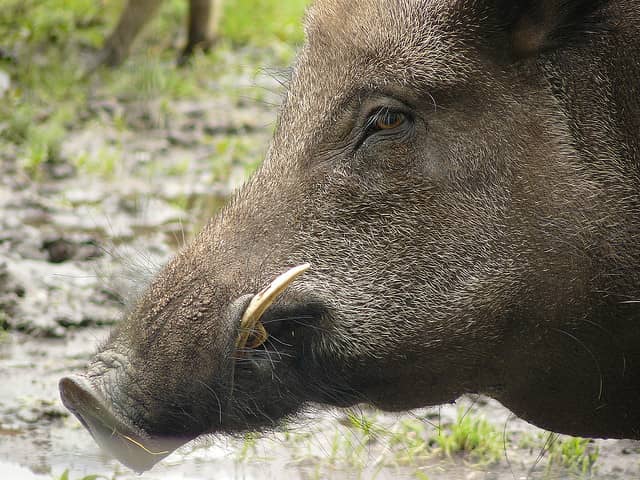Hog Hunting: The Cure-All for Off-Season Blues
Kevin Reese 12.20.11

Your appointment with destiny is upon you. It’s unavoidable and unfortunately, brings with it the feeling of abandonment. One way or another, your deer season is about to end. With that daunting thought casting a doom-and-gloom blanket across the deer woods, what on earth is a hunter to do?
Hit the hog woods! The hog “prob-ulation” continues to escalate. In Texas, home to as much as 50 percent of the nation’s hog population, we face a catastrophic problem. Annual reported damages now top $400 million dollars and pesky pigs are now found in at least 39 states and four Canadian provinces with a population estimated at over 5 million and growing.
Rabbits aside, wild hogs offer quite the reproductive conundrum. With a gestational period of 115 days, feral hogs can breed as often as twice per year, birthing litter averages of 6 – 8 with a 1:1 boar to sow ratio. Sitting down and doing some simple math does much to furl the brow of anyone interested in preserving habitat and conserving indigenous wildlife, of which, wild hogs are not; in fact, they present quite the competition or outright defeat of various native animals. Consider their unruly omnivorous appetites, reproductive rate, aggression and complete lack of natural predators (they have zero!) and you have the quintessential prey for those of us who appreciate living at the top of the food chain.
Experienced hog hunters agree, hog hunting is basically deer hunting in the off season. Strategies for hunting hogs parallel proven methods of successful deer hunting. Scouting for sign, as you would for deer, is key to establishing that your hunting has some uninvited guests. Scan your hunting area for rooting, hoof prints, scat, wallows and mud on trees. Use a trail camera to catch them in action. Ensure your camera boasts great night surveillance capabilities. I currently use a SpyPoint Pro-X because of its all-around day and night capabilities including high resolution infrared photos and video with clear audio; a lot can be learned from trail camera photos and video. Although patterning can be downright maddening, a trail camera also helps bridge that gap. HOT TIP: Hogs do what they want, when they want to do it. If you’ve patterned hogs two days in a row, be in the stand on the third day… they generally do not keep a long term routine, especially with any human activity.
If you find hog activity, it’s time to plan your ambush. Will you spot and stalk or still hunt? Will you hunt from a tree stand, tripod or ground blind? Hogs possess one of the greatest noses in the woods, if not THE greatest. Some reports claim hogs can pick up your scent on the wind as far as seven miles away!
Hogs also are incredibly intelligent. They know their environment and recognize changes quickly. Placing a ground blind means brushing it in and leaving it up to ensure that if they do pick up it up, they become comfortable with it. Many blinds also use scent eliminating technology. This year’s blind, my Ameristep Carnivore, not only uses carbon technology in the wall of the blind, it has a ground skirt to improve scent suppression while I hunt. Scent control is critical. Ensure your blind or stand setup is downwind from where you expect hogs to be located and follow a disciplined scent elimination and control routine.
Spot and stalk hunting is also effective but don’t believe the hype on a hog’s eyesight. They do not see well, but much better than most people think. They’ll spot you every time on open ground; within bow range they will also spot your movement in good cover. Approach from downwind and never expose your silhouette. Make sure the area behind you continues to break up your outline as you close the distance. Once in range pick your spot! Remember that a hog’s vitals are more forward and lower than vitals on a deer; more on shot placement later. Until then, leave your blanket of off-season doom and gloom draped over the couch and get back outdoors. Wild hogs are coming to your neck of the woods!

